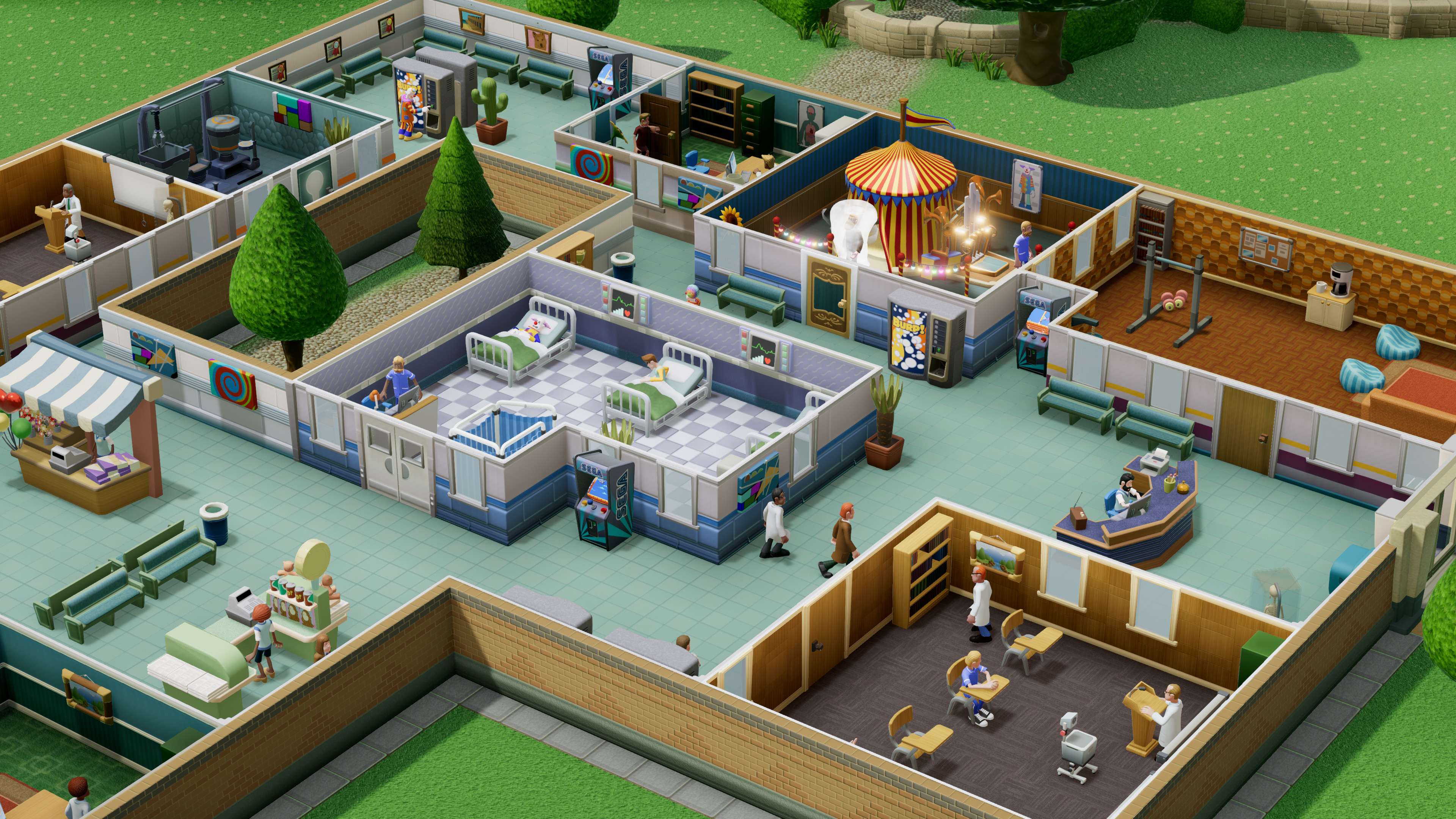

It was surprising to load the staff menu for the first time and realise that all doctors and janitors are men, while all nurses and receptionists are women. The game hasn’t entirely aged well, otherwise. There’s a sense that you’re always laying the tracks in front of the train, which is about as close to topical satire as Theme Hospital gets. If patients are walking out in disgust because you can’t do anything about their grossly-inflated heads, then it might be time to build an extra treatment room on the fly. If your receptionist is constantly saying that a doctor is needed in the general diagnosis department, then that might be a sign that it’s time to summon one from thin air. At the beginning of each Theme Hospital level there’s a grace period where you can get up and running, but after that you’re building as you go. A modern take on this idea would very likely let you do your planning and building in a paused state and then click ‘go’ on your new hospital design: that isn’t the case here. You can speed up or slow down time, but you can’t change anything about your hospital while you’re paused. Build a hospital to spec, watch it run, move on. There are random events, epidemics, and a few Easter eggs: you might get tasked with curing a set of priority patients to a time limit or suddenly contend with an equipment-wrecking earthquake. Meet these criteria for a given stage and you’re whisked away onto the next right away.

You’re being assessed based on how many patients you cure, what proportion of your walk-ins you handle, how much money you make and the overall worth of your hospital. You can borrow money to raise the necessary funds, or fiddle with hospital policy to boost profits: like forcing patients to get more diagnoses than they actually need, paying every time. You need to provide toilets and rest facilities for your staff, consider heating and keep your corridors clean. All of this comes at a cost, which is recouped as patients pay for diagnosis and payment. After that comes treatment: a pharmacy can handle most cases, while certain daft diseases-such as Bloaty Head, or King Complex, which turns people into Elvis-require special treatment facilities. Then you’ll need diagnosis rooms, psychiatrists’ offices, and wards. Your first job is to create a reception area with desk, benches, vending machines, plants and so on. Patient growthĮach new hospital begins as an empty shell, with new wings available for purchase depending on the level you’re playing. Instead, this is best understood as a comedy management game written and designed by people who watched a lot of comedies like The Fast Show and Red Dwarf-it just happens to have a hospital theme. Theme Hospital is too British to read as a sendup of the US healthcare system, and too playful to come across as a critique of the management of the NHS. It’s tempting to try and unpick the politics here but, if anything, Bullfrog was eager to avoid being seen to undermine the practice of running a hospital. It has been worth a fiver for about 15 years and is still worth a fiver today. It is kid-friendly but cheeky, lightly strategic but chiefly about having fun with your hospital, its beleaguered staff, and its comedy gadgets.

Visit any game shop (remember those?) and there it would be, in a number of different budget imprints. Then Theme Hospital found a second life as a bargain-bin perennial throughout the low years of the early ’00s.

It was softly irreverent in a way that drew flack from government and the press at the time, but would entirely pass under the radar now. Theme Hospital adopted Theme Park’s tone-and great swathes of its code-and turned it to a different purpose: the running of a profit-driven British hospital where patients suffer from a variety of comedic, and fictitious, diseases.
#THEME HOSPITAL GAME PLAY SIMULATOR#
Theme Park was an irreverent, colourful management simulator that turned the Guildford studio from a domestic player to an international contender.


 0 kommentar(er)
0 kommentar(er)
